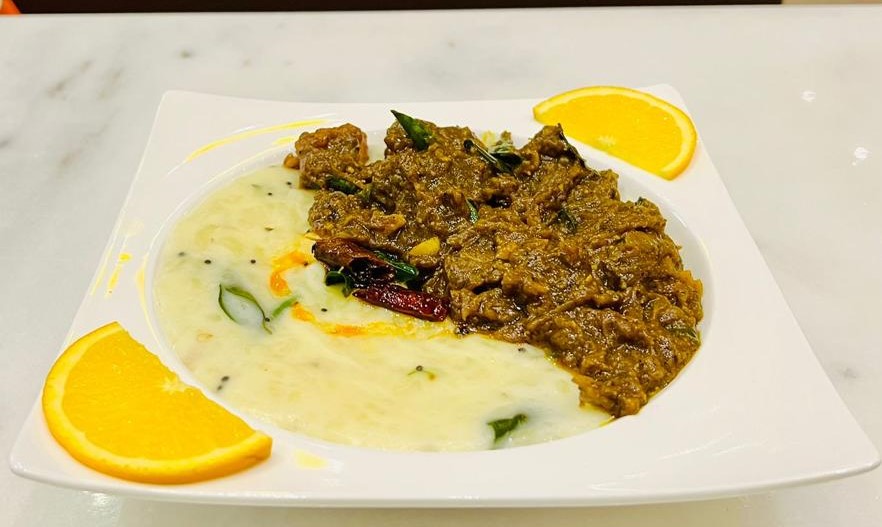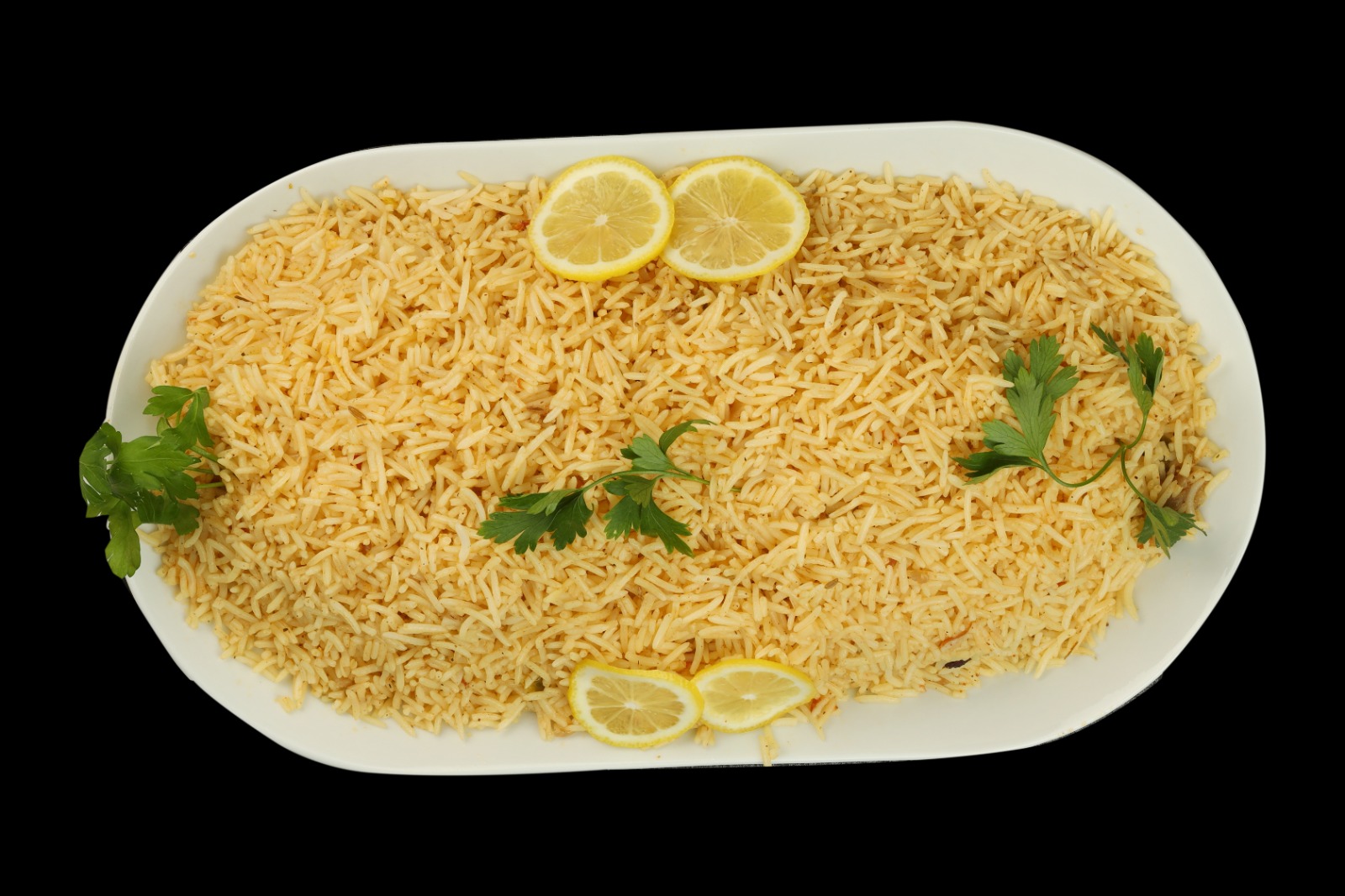Matar Grill Restaurant
Building Number 25, Street 840, Near Tea Time Old Airport Road, Old Airport Road, Doha, 560017
Since : 2021
Building Number 25, Street 840, Near Tea Time Old Airport Road, Old Airport Road, Doha, 560017
Since : 2021
Arabic cuisine restaurants specialize in the food traditions of the Arab world, which includes a rich diversity of flavors and cooking techniques. These restaurants offer traditional dishes that are popular in countries such as Lebanon, Syria, Jordan, Egypt, and the Gulf region. Arabic cuisine is known for its use of fresh ingredients such as lamb, chicken, rice, grains, olive oil, and a variety of herbs and spices like cumin, coriander, garlic, and mint. It is also characterized by the use of sauces such as tahini, hummus, and yogurt, making for a balanced and flavorful culinary experience.
Arabic cuisine restaurants in Doha reflect the cultural blend of the Middle East, offering dishes such as grilled kebabs, shawarma, hummus, tabbouleh, falafel, and lamb dishes. The cuisine is not only hearty and filling but also steeped in history and tradition, making it an integral part of the dining scene in Doha. The availability of Arabic restaurants in the city caters to a growing demand for authentic regional flavors, especially given Doha's diverse and multicultural population. Whether you're a fan of spicy meats, fresh salads, or sweet pastries like baklava, Arabic cuisine restaurants in Doha promise an immersive dining experience.
Matar Grill Restaurant
Address: Building Number 25, Street 840, Near Tea Time Old Airport Road, Old Airport Road, Doha, 560017
Nobu Doha
Address: Four Seasons Hotel Doha, Diplomatic District Street, West Bay, Doha, Qatar
Al Mourjan Restaurant
Address: Corniche Road, Doha, Qatar
IDAM by Alain Ducasse
Address: Museum of Islamic Art Park, Doha, Qatar
The Cellar
Address: Oryx Rotana, Airport Road, Doha, Qatar
La Spiga by Paper Moon
Address: W Doha Hotel & Residences, West Bay, Doha, Qatar
The Royal Grill
Address: The Ritz-Carlton, Doha, West Bay Lagoon, Doha, Qatar
Folly by Nick & Scott
Address: Souq Waqif Boutique Hotels, Doha, Qatar
The Meyhane
Address: The Pearl-Qatar, Doha, Qatar
Al Tawash Restaurant
Address: Souq Waqif, Doha, Qatar
Ah, Arabic restaurants, a culinary adventure waiting to unfold! These vibrant establishments will greet you with tantalising aromas of exotic spices and mouthwatering flavours. From the bustling streets of Cairo to the charming alleyways of Marrakesh, each dish tells a story of rich cultural traditions. Picture yourself indulging in succulent kebabs, their juices mingling with the smoky essence of the grill. Or perhaps you're more drawn to the allure of fragrant tagines, where tender meats and vegetables simmer in a symphony of spices. And let's not forget the beloved falafel, crispy on the outside and bursting with herbaceous flavours within. We invite you to come with us on this flavourful journey, one bite at a time. Prepare your senses for an unforgettable adventure.
Exploring the diverse and flavorful world of Middle Eastern cuisine at an Arabic restaurant can be a delightful experience. Here are some popular dishes you might encounter, each offering a unique taste of the rich culinary traditions of the Arab world.
Hummus: This creamy, smooth dip is a staple in Arabic cuisine. Made from blended chickpeas, tahini (sesame paste), lemon juice, and garlic, hummus is both nutritious and delicious. Its typically served with warm pita bread, fresh vegetables, or even as a spread in sandwiches. Its versatility and rich flavour make it a favourite among diners.
Falafel: These crispy, deep-fried balls or patties are made from ground chickpeas or fava beans, mixed with herbs, spices, and onions. Falafel is often served with tahini sauce or tucked into pita bread along with fresh vegetables and pickles. The crunchy exterior and soft interior provide a satisfying contrast that makes falafel an enjoyable treat.
Tabbouleh: A refreshing and vibrant salad, tabbouleh is made from finely chopped parsley, tomatoes, bulgur wheat, and mint, all dressed with olive oil and lemon juice. This salad is light, healthy, and bursting with fresh flavours. Its a perfect starter or side dish, balancing out heavier main courses with its crisp, citrusy taste.
Shawarma: Shawarma is a popular street food and a must-try at Arabic restaurants in Ernakulam. Marinated meat, usually chicken, beef, or lamb, is slow-cooked on a vertical rotisserie. Thin slices are then shaved off and served in flatbread, often with garlic sauce, tahini, pickles, and a variety of fresh vegetables. Shawarma is known for its tender, juicy meat and aromatic spices.
Kabsa: A traditional rice dish, kabsa is often considered the heart of Arabic cuisine. Its made with long-grain rice, meat (such as chicken or lamb), and a blend of spices including saffron, cardamom, and cloves. Kabsa is typically garnished with nuts and raisins, adding both texture and a hint of sweetness. This hearty dish is both filling and full of rich, layered flavours.
Baba Ghanoush: Similar to hummus, baba ghanoush is a creamy dip made from roasted eggplants, tahini, lemon juice, and garlic. The roasting process gives the eggplant a smoky flavour, making this dip a unique and tasty addition to any meal. Usually, it's served with veggies or pita bread for dipping.
Manakeesh: Often referred to as Arabic pizza, manakeesh is a flatbread topped with a variety of ingredients such as za'atar (a blend of thyme, sesame seeds, and sumac), cheese, or ground meat. This is a adaptable recipe that works well for breakfast, a snack, or even dinner.
Kofta: Kofta are spiced ground meatballs or patties, usually made from beef or lamb. Theyre often grilled or cooked in a tomato sauce and served with rice or flatbread. The blend of spices used in kofta gives them a rich and savoury flavour that pairs well with many sides.
Fatayer: These small, savoury pastries are filled with a variety of ingredients such as spinach, cheese, or meat. Fatayers are perfect as appetisers or snacks. The flaky pastry and flavorful fillings make them a delightful addition to any meal.
Arabic cuisine is known for its rich flavors and aromatic spices. Here’s a look at the key ingredients that bring a unique touch to dishes at Arabic restaurant
Chickpeas: A staple in hummus and falafel, providing a nutty flavor and protein-packed nutrition.
Tahini: A creamy sesame paste, essential in hummus and baba ghanoush for its rich, nutty flavor.
Mint: Adds a refreshing, aromatic touch to salads, drinks, and dishes.
Parsley: A key herb in tabbouleh and often used as a garnish for a fresh, vibrant taste.
Sumac: A tangy red spice that adds lemony flavor to meats, salads, and rice.
Cumin: Warm and earthy, cumin is used in spice blends, marinades, and seasonings.
Cinnamon: Adds warmth and sweetness to both savory and sweet dishes.
Saffron: A prized ingredient, lending a golden hue and unique taste to rice dishes like kabsa.
Cardamom: Aromatic, with sweet floral notes, used in coffee, desserts, and savory dishes.
Rice: Basmati rice forms the base of many dishes, including kabsa and biryani.
Lentils: Valued for their hearty texture and high protein content, often used in soups and stews.
Pomegranate: Adds sweetness, acidity, and a burst of color to salads and marinades.
Nuts: Almonds, pine nuts, and pistachios bring crunch and richness to various dishes.
Yogurt: Used in marinades and sauces, adding creaminess and tanginess to dishes like shawarma.
Za'atar: A spice blend of thyme, sesame, and sumac, giving a herby, tangy flavor to breads and meats.
These ingredients work together to create the bold and diverse flavors of Arabic cuisine
Selecting the right Arabic restaurant goes beyond just finding a spot with shawarma and hummus. Here are key factors to consider for a delightful dining experience:
Authenticity of Cuisine: Opt for a restaurant that offers traditional dishes like tabbouleh, falafel, and kebabs, prepared using authentic methods and ingredients. Reading reviews or getting recommendations can help you find genuine Arabic flavors.
Menu Variety: Look for a diverse menu with a range of appetizers, main courses, and desserts from different Arabic regions. This ensures there’s something for everyone, catering to various tastes and dietary preferences.
Quality of Ingredients: Fresh, high-quality ingredients make a huge difference in flavor and nutrition. Check for signs of fresh produce and locally sourced items, as this elevates both taste and the healthiness of your meal.
Ambience and Decor: A well-designed restaurant that reflects Arabic culture through its music, artwork, and furnishings creates a more immersive dining experience. An inviting atmosphere can transport you to the Middle East.
Service Quality: Friendly, knowledgeable staff can enhance your visit. Good service, including attentiveness and the ability to offer recommendations, makes a big impact on your overall experience.
Hygiene and Cleanliness: Ensure the restaurant maintains high hygiene standards in both the dining area and the kitchen. A clean environment reflects the establishment’s quality and ensures a safe dining experience.
Location and Accessibility: Choose a conveniently located restaurant with easy access and ample parking or public transport options, especially if dining with a larger group.
Price and Value: Compare prices with similar restaurants and consider portion sizes and quality. Paying a bit more may be worth it for authenticity and quality, ensuring good value for your money.
Special Dietary Needs: Ensure the restaurant accommodates dietary restrictions like vegetarian, vegan, or gluten-free options, so all guests can enjoy their meal.
Special Features: Unique offerings like live music or themed nights can add an extra layer of enjoyment to your dining experience, making it more memorable.
Reservations and Wait Times: Check if the restaurant accepts reservations to avoid long wait times, especially during peak hours or when dining with a large group, ensuring a smoother experience.
Arabic cuisine refers to the food and dishes from the Arab world, which includes countries like Lebanon, Syria, Egypt, Iraq, Saudi Arabia, and many others. It features a variety of flavors, such as aromatic spices, fresh herbs, and unique ingredients like olive oil, tahini, and pita bread.
Some popular Arabic dishes include:
Arabic food can range from mildly spiced to moderately hot, depending on the dish and regional preferences. Many dishes use herbs and spices like cumin, coriander, cinnamon, and turmeric, which provide rich flavors without being overly spicy.
Yes, Arabic cuisine offers a wide variety of vegetarian options, such as hummus, falafel, tabbouleh, baba ganoush, and various vegetable stews. Many Arabic dishes are made with fresh vegetables, legumes, and grains, making it a great choice for vegetarians.
The dining experience at an Arabic restaurant is often communal. Dishes are typically shared among the guests, with multiple small plates served at once. It's common to enjoy a variety of appetizers (mezzes), main dishes, and desserts during a meal.
Alcohol availability in Arabic restaurants depends on the country and local laws. In many Arab countries, alcohol may not be served due to cultural or religious practices. However, in some international locations, Arabic restaurants may offer alcohol.
Some traditional drinks in Arabic cuisine include:
Arabic cuisine can be very healthy, especially when it emphasizes fresh vegetables, lean meats, legumes, and whole grains. Many dishes are prepared using olive oil, which is considered a heart-healthy fat. However, some dishes may be fried or contain rich sauces, so it’s always good to ask about preparation methods.

Doha, Old Airport Road

Doha, Old Airport Road
Latest Customer Reviews
"Best food ever"